Click on images to enlarge
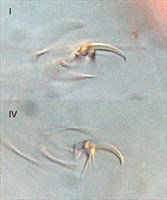
Fig. 1. Oligonychus tiwakae adult female paratype - detail of claws I and IV.
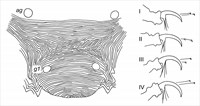
Fig. 2. Oligonychus tiwakae adult female paratypes - detail of pregenital striae; and detail of claws I-IV.
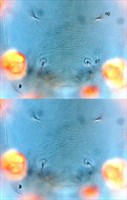
Fig. 3. Oligonychus tiwakae adult female paratype - detail of pattern of pregenital striae (at different focal points).

Fig. 4. Oligonychus tiwakae adult female paratype - detail of pattern of prodorsal striae.
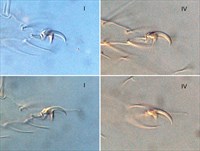
Fig. 5. Oligonychus tiwakae adult male paratypes - detail of claws I and IV.
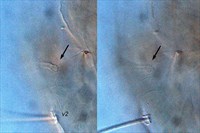
Fig. 6. Oligonychus tiwakae adult male paratype - detail of peritreme tip (same individual, different sides).

Fig. 7. Oligonychus tiwakae adult male paratypes - detail of aedeagus (at different focal points); and detail of claws I-IV.

Fig. 8. Oligonychus tiwakae adult male paratype - detail of aedeagus (at different focal points).

Fig. 9. Oligonychus tiwakae adult male paratype - detail of aedeagus.
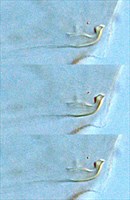
Fig. 10. Oligonychus tiwakae adult male paratype - detail of aedeagus (at different focal points).
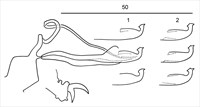
Fig. 11. Oligonychus tiwakae adult male (non-types) - detail of aedeagus (at different focal points); and detail of claw I.
Material examined
types; non-types
Taxonomy
Subfamily Tetranychinae
Tribe Tetranychini
Distribution
+Australia, *New Caledonia
Taxonomy Changes
None
Diagnosis
Female
- empodia I-IV = long slender claw, longer than proximoventral hairs (Figs 1, 2)
- pregential striae mostly transverse to weakly arching around genital flap, but can have patches of irregular striae just anterior to genital flap (Figs 2, 3)
- prodorsal striae longitudinal, forming a U-shaped posteriorly (Fig. 4)
- dorsal opisthosomal striae transverse
- peritreme ending in slightly expanded bulbous tip (Fig. )
- tarsus I with the sockets of four tactile setae proximal to, and one solenidion overlapping, the socket of the proximal duplex seta
- tarsus II with the sockets of two tactile setae and one solenidion proximal to, and two tactile setae overlapping, the socket of the duplex seta
- tibiae I-IV 10(1+0), 6, 5, 6
- green with three dark spots dorsally
Male
- empodium I = short stout, strongly curved dorsal claw; ventral claw directed ventrally, short tapered; dorsal claw slightly longer than or subequal to ventral claw (Figs 5, 7, 11)
- empodia II-IV with strong curved claw, subequal in length with proximoventral hairs (Figs 5, 7)
- peritreme ending in simple bulb, slightly expanded (Fig. 6)
- tarsus I with the sockets of four tactile and two solenidia proximal to, and one solenidion overlapping, the socket of the proximal duplex seta
- tarsus II with sockets of two tactile setae and one solenidion proximal to, and two tactile setae overlapping, the socket of the duplex seta
- chaetotaxy for legs I-IV:
- femora 10, 7, 4, 4
- genua 5, 5, 4, 4
- tibiae 12(3+0), 6, 5, 6
- aedeagus dorsally directed; short stout neck, with small knob; anterior projection short broad triangular, and posterior projection short fine triangular; dorsal margin of knob angulate; dorsal margin of shaft parallel to ventral margin; dorsal angle right-angled (Figs 7-11)
- yellow
Hosts
Imperata cylindrica, *Themeda sp. (Poaceae)
Similar Taxa
References
Beard, J.J., Walter, D.E. and Allsopp, P.G. (2003) Spider mites of sugarcane in Australia: a review of grass-feeding Oligonychus Berlese (Acari: Prostigmata: Tetranychidae). Australian Journal of Entomology 42: 71-78
*Gutierrez, J. (1978) Cinq nouvelles especes de Tetranychidae (Acariens) de Nouvelle-Caledonie. Acarologia 20: 351-364
+Gutierrez, J. and Schicha, E. (1983) The spider mite family Tetranychidae (Acari) in New South Wales. International Journal of Acarology 9: 99-116
Copyright © 2018. All rights reserved.